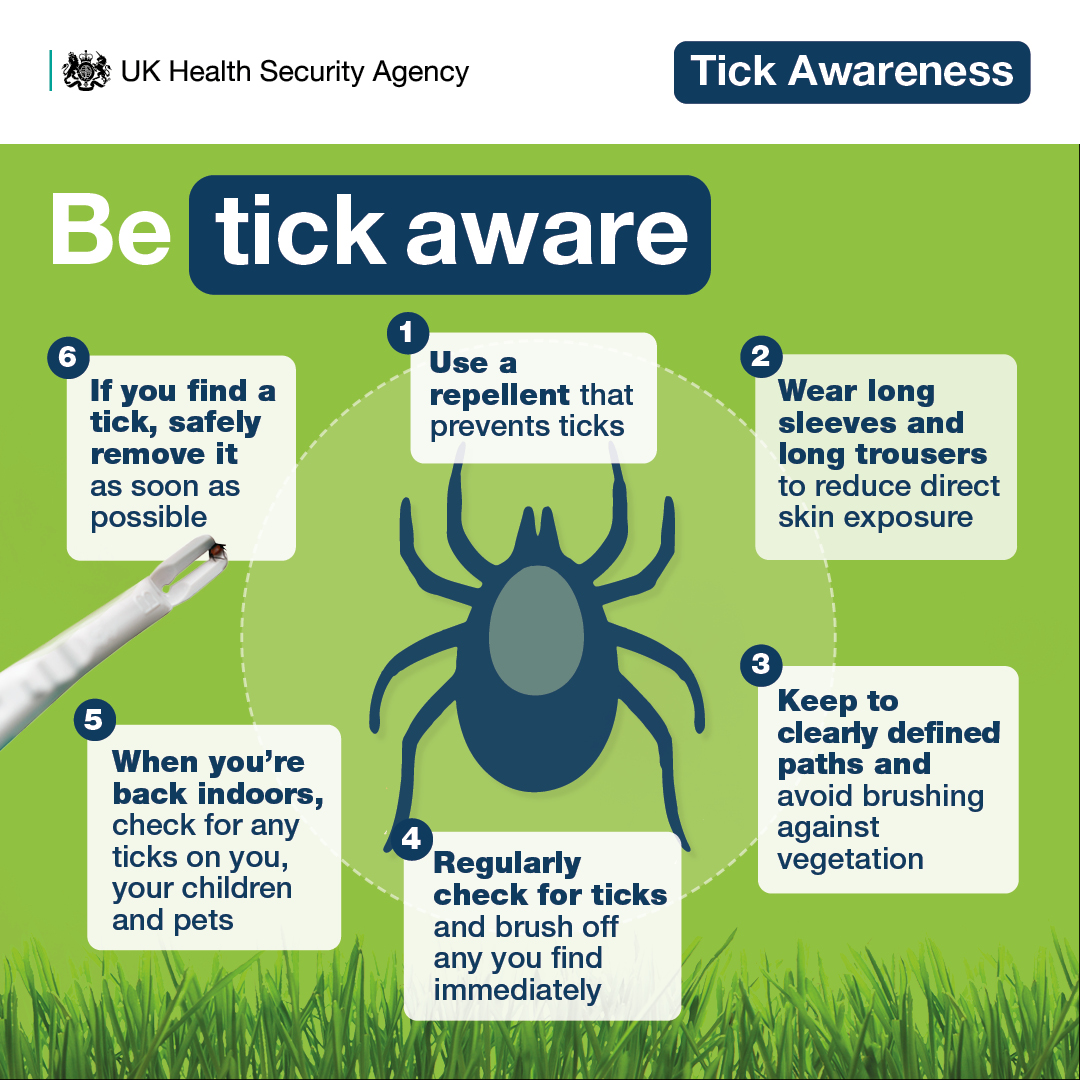
Warwickshire County Council, along with colleagues from UKHSA, is highlighting Tick Bite Prevention Week to help promote what you you should do if you or a family member is bitten by a tick.
March sees the peak season for ticks and so it’s important to be vigilant when out and about.
Ticks are small, spiderlike creatures that feed on the blood of animals and people. Ticks are particularly common in grassy and woodland areas, where you are more at risk especially when carrying out activities such as, hiking, cycling or camping. However, ticks can also sometimes be found in urban gardens too.
Shade Agboola, Director of Public Health at Warwickshire County Council said: It can be quite distressing when you or a loved one has a tick bite. The health advice below will help you to safely remove a tick and to recognise the symptoms of secondary illnesses such as Lyme disease. Please do seek advice and information provided and if you think you have been bitten by a tick, please follow advice given by UKHSA.”
If you have been bitten by a tick, please follow the following guidance from UKHSA:
-
If you spot a tick, you must remove as soon as possible using a tick-removal tool or fine-tipped tweezers. These can be purchased in pharmacies.
-
Fine-tipped tweezers are different to regular tweezers that might be used to remove eyebrow hair. Fine-tipped tweezers are very narrow and pointed at the tip and ensure that ticks are not squashed during removal.
-
To remove a tick, grasp the tick as close to the skin as possible and pull upwards slowly and firmly.
-
You can remove ticks safely yourself or you can ask for assistance from others if needed
Being bitten by a tick can put you at risk of catching Lyme disease. One of the most common symptoms of Lyme disease is a bullseye rash around the bite which can develop between 3 – 30 days after being bitten. Other symptoms can be flu-like symptoms, nerve pains or a droop on one or both sides of face. If you have any of these symptoms, contact your GP or call the NHS on 111.
Whilst you should enjoy being outdoors there are a few preventative measures you may wish to carry out. These include:
-
regularly check clothing and exposed skin for ticks that might be crawling on you and brushing them off immediately
-
walk on clearly defined paths to avoid brushing against vegetation where ticks may be present
-
wear light-coloured clothing so that ticks crawling on clothing can be spotted and brushed off immediately
-
using an insect repellent that can repel ticks and prevent them from climbing onto clothing or attaching to skin (always follow the manufacturer’s guidance).
-
wear long trousers and long-sleeved tops to reduce the likelihood of direct exposure of ticks to your skin, making it more difficult for them to find a suitable area to attach
-
after spending any time outside, check yourself, your clothing, your pets and others for ticks. Ticks can bite anywhere on the body.
To find out more about ticks please go to https://ukhsa.blog.gov.uk/2024/03/21/what-is-lyme-disease-and-why-do-we-need-to-be-tick-aware/
Report a tick
UKHSA relies upon members of the public, health practitioners, veterinary practitioners, wildlife groups and others to help to map and monitor tick distribution and associated risk of exposure to ticks in the UK. Please go to https://www.gov.uk/guidance/tick-surveillance-scheme